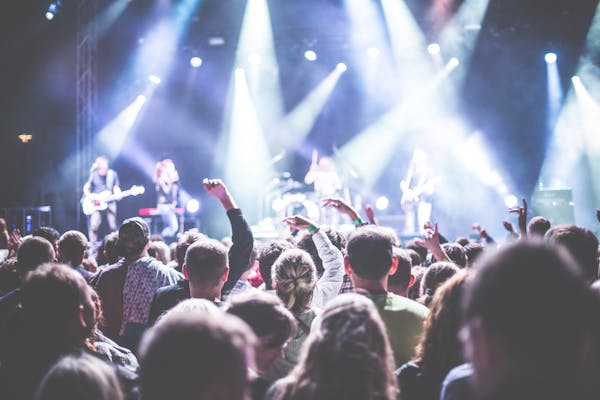A concert is a live musical performance. It can be in a variety of places, including theaters, arenas, and clubs. Musical styles may include pop, jazz, rock, or classical.
Many performers have a stage persona or nickname. For example, David Bowie was Ziggy Stardust, and Beyonce is Sasha Fierce.
Unlike recitals, concerts are usually group performances. They also have a higher level of intensity than a studio session. Discover more at The Eagles Concert Las Vegas Sphere.
Stage design
The stage design of a concert is one of the most important aspects of creating an unforgettable event. Whether you’re an up and coming artist or an experienced pro, a great stage can help you tell a story and leave your audience with a lasting impression.
It’s essential to understand your audience and their preferences when designing a stage. Strobe lights, for instance, may be fun for younger audiences, but older music lovers might find them distracting.
You can add depth to your stage by using lighting to highlight key elements. Lighting can also create movement, directing the audience’s attention to specific areas of the stage. You can also use a mix of lighting and props to draw the audience’s attention. For example, you can use lit pillars to direct their eyes to the center of the stage.
Lighting
Lighting plays a vital role in concert performances, adding depth and dimension to the stage and amplifying the musical experience. From spotlights to color washes, lighting effects are a silent collaborator that works hand in hand with the music and elevates the audience’s emotional journey.

-Strobe Lights: These are rapid pulses of light that create a freeze-frame effect, adding drama and intensity to the performance. Strobe lights are especially effective for high-energy moments in the music.
-Lighting Stands and Rigging: Light stands and trusses are the foundation of any lighting rig. They help to direct and focus the front lights, which are used to wash the performers with a layer of front light. They also provide the backdrop for backlighting, which adds a dimensional appearance to the stage.
Sound
The sound effects on the stage are important for keeping the audience’s attention. Different sounds can inspire emotions, from fear and suspense to happiness and excitement. They can also influence the mood of the audience, for example, faster tempos can create anticipation and a sense of urgency while slower tempos can make the crowd sad.
Moreover, concert performances are often an attempt to confront the past with the present. This can be accomplished by discerning heritages or genealogies, by obvious borrowings, and by provoking transhistorical encounters between works that could not have occurred without the concert.
Concerts can take place in any venue, from a hall built specifically for the purpose to a stadium or large playing field. They can be a one band show or include support acts. Some artists add entertainment devices to their concerts such as elaborate stage lighting, image-magnification and pre-recorded video; inflatables, artwork or set pieces; and various special effects including theatrical smoke and fog and pyrotechnics.
Atmosphere
As the lights dim and the music begins, concert-goers transform venues into spaces of energy and connection. This symbiotic relationship is unique to live entertainment, and creates an atmosphere that’s unlike any other.
While the environment, facilities, and type of music are all important factors in creating a good atmosphere at a concert, one of the most significant predictors is shared social identity with others at the event. According to research by Fergus Neville, sharing your identity with others makes you feel validated and connected at events, which is why people often experience positive emotions when attending concerts.
For example, Minneapolis-based rapper Atmosphere has built a strong following in the underground hip-hop scene by releasing freestyle and live recordings on their Rhymesayers label. Their lyrics speak to the struggles of life and provide a sense of community for their fans.
Interaction with the audience
A concert is a live performance of musical works carried out by an ensemble or by a solo musician. It can take place in a wide variety of settings, from private homes and small nightclubs to dedicated concert halls and amphitheatres. It is also known by other informal names, including show and gig.
Conducting an ensemble during a concert requires a balancing act that can be difficult to master. It is important to keep in mind that the audience will react differently depending on their mood and expectations. In addition, it is vital to maintain eye contact with the audience and wave occasionally to keep them engaged.
Some performers incorporate additional entertainment devices into their concerts to increase the sense of spectacle and excitement. These include elaborate stage lighting, pre-recorded video projection and artwork, inflatable sets, and other special effects.